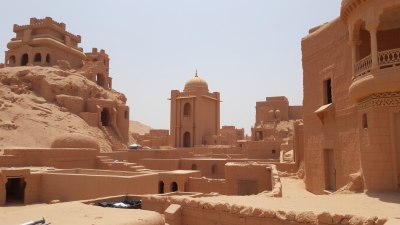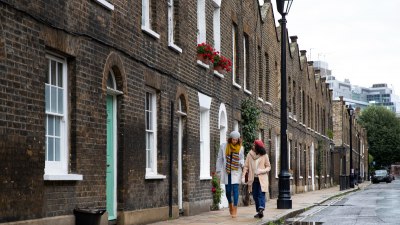The Past Painted in Clay in Shibam, Yemen
Discover the historical significance and architectural beauty of Shibam, Yemen's ancient mudbrick city.

Image created with Flux Schnell
Shibam, known as the 'Manhattan of the Desert,' is a small town located in the Hadhramaut region of Yemen. This ancient city is famed for its unique urban planning and distinctive mudbrick skyscrapers that rise majestically from the arid landscape, showcasing a masterful blend of functionality and artistry. Built predominantly between the 3rd and 17th centuries, Shibam has become an emblem of Yemeni culture and architectural innovation, drawing attention from scholars, historians, and tourists alike.
The significance of Shibam lies not only in its striking buildings but also in its historical context. The city was established as a hub for trade routes connecting the interior of Yemen to the coast, facilitating the exchange of goods, ideas, and culture. This strategic location contributed to its prosperity and growth, as merchants and travelers flocked to its bustling markets.
Architecture of Shibam
One of the most remarkable features of Shibam is its architecture. The skyscrapers of Shibam, some reaching heights of up to 30 meters, are constructed using adobe mud bricks that are traditionally made from the local soil. These bricks have remarkable thermal properties, allowing the buildings to remain cool during the hot days and warm during the cold nights. The structures are often several stories high, with balconies and intricate facades that reflect the artistic sensibilities of the inhabitants.
The layout of Shibam is a marvel of urban design. The city is arranged in a grid pattern, with narrow winding streets that encourage social interaction among residents. The buildings are often clustered together, creating a sense of community while allowing for privacy. This design not only promotes efficiency in space usage but also provides protection from the harsh desert environment.
A Window to Heritage
Shibam is more than just an architectural wonder; it is a living museum that embodies the rich cultural heritage of Yemen. The city has been designated a UNESCO World Heritage Site since 1982, recognizing its outstanding universal value. The preservation of Shibam is crucial, not only for Yemen's national identity but also for the global heritage that emphasizes the importance of sustainable architecture and urban planning.
Through the centuries, the people of Shibam have maintained their traditions, engaging in practices that reflect their historical narrative. The city's residents still partake in traditional crafts such as pottery and weaving, which have been passed down through generations. The markets in Shibam offer a glimpse into daily life, filled with vibrant colors, the aroma of spices, and the sounds of lively exchanges.
Challenges of Preservation
Efforts to restore and maintain the city are ongoing, with initiatives focusing on the use of traditional building techniques and materials. Local craftsmen are pivotal in this process, ensuring that restoration efforts respect the authenticity of Shibam's architectural style. Community engagement is also essential, as it fosters a sense of ownership among residents and encourages them to take an active role in the preservation of their heritage.
Cultural Significance
The cultural importance of Shibam extends beyond architecture; it encompasses a deep-rooted connection to the land and its history. The city's inhabitants have cultivated a strong identity, grounded in the values of community, resilience, and tradition. Festivals and communal gatherings highlight these values, bringing people together to celebrate their shared heritage. Poetry, music, and dance are integral to these celebrations, reinforcing the bonds within the community.
Traditional Yemeni hospitality is evident in Shibam, where visitors are welcomed with open arms. The rich culinary offerings, including dishes such as 'salta' and 'muxal,' provide a taste of the local culture. Sharing meals is a significant aspect of social life, serving as a means to strengthen relationships and foster a sense of belonging.
Modern-Day Shibam
In contemporary times, Shibam serves as a symbol of endurance and hope. Despite the numerous challenges it faces, the spirit of the city remains vibrant. The resilience of its residents is demonstrated through their commitment to preserving their heritage while adapting to modern changes. Young people are increasingly interested in learning about their history and sharing it with the world, utilizing technology and social media to promote Shibam's beauty and significance.
The potential for sustainable tourism in Shibam is vast. By attracting visitors who are interested in culture, history, and architecture, Shibam can generate income that supports local communities and conservation efforts. Responsible tourism practices, focusing on education and conservation, can contribute positively to the preservation of this ancient city while providing economic opportunities for its residents.
Shibam, Yemen, stands as a testament to the ingenuity of human creativity and the resilience of cultural identity. Its clay-painted past tells a story of a community that has withstood the test of time and continues to thrive amidst adversity. As we look to the future, it is essential to prioritize the preservation of Shibam, ensuring that its unique heritage is safeguarded for generations to come. By recognizing the value of this extraordinary city and its contributions to global heritage, we can embrace a narrative that honors the past while inspiring future generations to cherish and protect their cultural landscapes.











